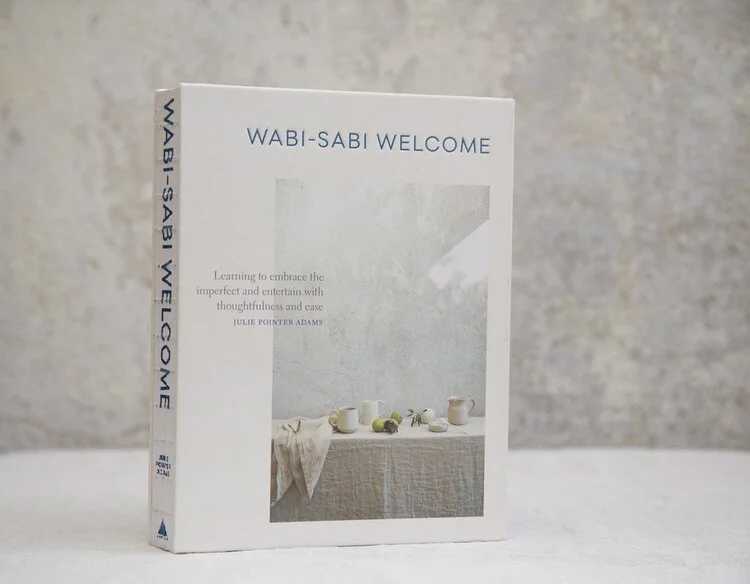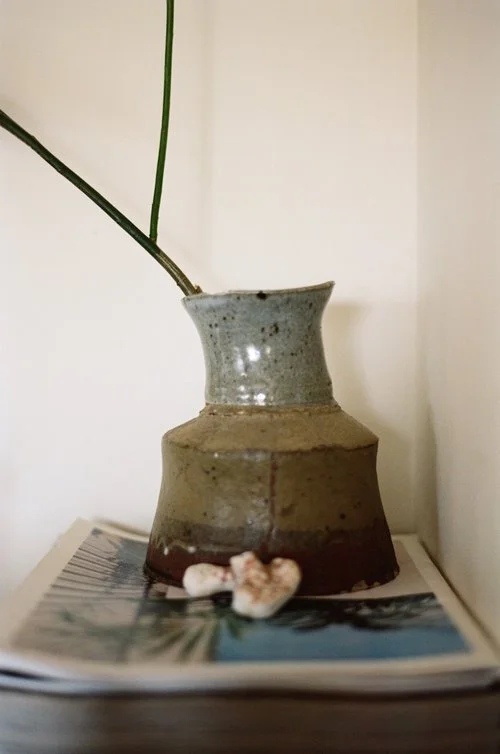The one book I use as a leadership tool (this will surprise you)
Image from Wabi-Sabi Welcome
I close my eyes and take a step back in time. It’s a warm, sunny afternoon, and I’m standing in the corner of the library. I can see the sage, ochre, and amethyst-colored hills outside the tall windows. I hear pages flipping, and the gentle gliding sound of the card catalog drawers. I can smell the papers, the leathers, the inks. The sun streams through the windows and floods the carpet with light. I walk slowly among the shadows and beams as I browse for my latest favorite mystery novel.
Yes, I loved library day back then. I’d browse for hours if I could, or even tuck myself away in a cozy chair in that sunny corner by the windows and let myself get lost in the story until it was time to go home.
Even now, the library is still a favorite place, and I constantly have a stack of books near all my favorite spots to steal a few moments to read. On my nightstand, on my desk. Under the coffee table, hidden in drawers, tucked on shelves in my closet.
Image from Wabi-Sabi Welcome, Julie Pointer Adams and Ryan J. Adams
As part of my work in leadership, I rotate regularly through a collection of books dedicated to research for writing content, sharing in workshops, and inspiring others to lead with hope, live out their personal why, and give back to their communities. The books range from resonant and appreciative leadership, to purposeful living, to corporate culture and compassionate coaching.
But, there’s one book that I use as a leadership and coaching tool that may surprise you. If you’ve been in my home, followed me on instagram, or know me well enough, you also know that among those leadership books, you’ll find a whole collection on interior design, hosting, and floral and botanical arrangements. I have a stack of cookbooks, too, always at the ready for grabbing a new recipe to try out for my family.
So, it’s no surprise that this one book would be a go-to in my current collection. What may be a surprise is how it embodies my values and my inspiration as a leader and coach, and supports the many ways I see our world evolving in career and life, and certainly a fresh way of seeing and doing things in organizational cultures.
Photograph credit Julie Pointer Adams and Ryan J. Adams.
Wabi-Sabi Welcome is all about learning to embrace the imperfect and entertain with thoughtfulness and ease. Insert “host” or “gather” or “serve” in place of “entertain” and you have a way to lead meetings, host gatherings, and support others that feels comfortable, welcoming, and personal.
As the world is evolving right before our eyes, I’ve found myself spinning some days from how I might show up as a leader. There are times I lean into the strong, capable, problem-solving and steady role I must take. As I lead my family, my team, and myself, I need clarity and strong values to make decisions, analyze data quickly, and move forward on tasks and projects. While I understand the value of this style, I think we may often overlook another way of doing things. And I see it as an essential way to lead others, especially through an ever-changing environment.
I believe we must embody the idea of creating a welcoming atmosphere. Remind ourselves that we are together —in a family, on a team, as an organization—and as Julie Pointer Adams says, “no matter how, when, or where, rather than trying to impress our guests and achieve perfection,” it’s about creating environments with generosity and thoughtfulness, having experiences with others in real time, with real conversations.
Wabi-Sabi Welcome emphasizes the mindset of paying attention. Recognizing the the beauty found in the unusual, and in the moments often overlooked and unappreciated. It’s prioritizing ”people, places and things with humility and simplicity.”
As a coach, consultant, mother, and leader, many of the methods and practices I’m working on and sharing are grounded in this way of serving others—hosting people in real time in real conversation, respecting and acknowledging their emotions, their dreams, their celebrations, their sorrows. And finding joy, beauty, and appreciation in the every day. Returning to that sense of hope and well-being. Bringing us back to the idea that we can work together to create cultures of welcoming, feeling seen and heard, and feeling inspired.
Begin noticing the everyday through a lens of appreciation.
Be willing to be comfortable with the imperfect and unexpected—as a pathway to emerging ideas and possibilities, and as a place of genuine connection.
I took a few things from the book Wabi-Sabi Welcome, that you can start practicing as early as today.
Let people see us for who we truly are—allow whatever you offer to be a gift rather than a burden.
Instill an attitude of trust and freedom.
Let things unfold naturally, especially when things aren’t going as planned. When that happens, take a step back and focus on the big picture.
Commit to taking a “time-out” at least a few times a week to allow for spontaneous opportunities to meet with others to keep it simple and focused on the person instead of the agenda, being willing to “commit to coffee breaks.”
Create a sense of belonging by inviting people to play a part and contribute—participating makes everyone more attentive.
Often a listening ear and undistracted care is all that’s needed.
We set the tone for how company feels in our presence, whether close and comfortable or distant and tense.
Be kind and candid. Simple, heartfelt questions can go a long way.
This evening, as I take a few moments to end my day, I think of the challenges we face in our roles as leaders, especially now. Giving ourselves and others permission to slow down, to appreciate, to notice. To deeply understand the value of renewal, and doing things that spark life in us, so we might give to others out of a sense of abundance and heart.
Lately, I read this book to renew and to ground myself. To remember what inspires me and brings life to my own every day, and a reminder to embrace the perfectly imperfect. I also believe it’s a way for me to keep returning to the idea that the priority is people, and to invite opportunities for connection and meaning-making.
Want to continue this conversation?
How might you use some of the practices above in your daily activities?
Also, is there a book that inspires you in your career practice, or your leadership role that may be surprising and unexpected?
Share a comment below or reply to me by email.
I’d love to hear from you!





